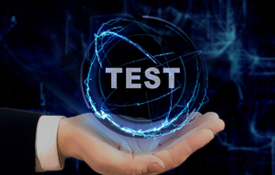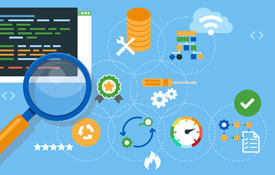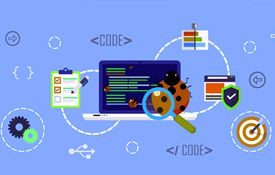Digital Transformation and IT Modernization projects have shifted into high gear during the COVID-19 pandemic. Tough on some teams is having to do more with less and speed up projects on reduced budgets due to the resulting COVID-19 business climate. On the other hand, other companies are adding funding and pressing the schedule under the idea to “innovate or die.” No one questions the immediate need for this work, but one thing is for sure: Test Teams need to be at the center of these projects.
“Digital Transformation” and “IT Modernization” are broad terms for big projects. A Digital Transformation (DT or DX) is the adoption of digital technology to transform services or businesses, through replacing non-digital or manual processes with digital processes, or replacing older digital technology with newer digital technology. Digital solutions may enable—in addition to efficiency via Automation—new types of innovation and creativity, rather than simply enhancing and supporting outdated ways of doing things. IT Modernization aims to bring legacy IT infrastructure up-to-date and focuses on addressing operational challenges, including efficiency, access, security, and agility.
There are many reasons why these projects or paradigm shifts can overwhelm a company, including:
- Software Development practices have changed significantly.
- Toolchains have grown rapidly thanks to DevOps’ influence on quality, automated delivery and deployment, and speed.
- Staffing models and changes.
- Adoption/modernization of new technologies, hardware, and devices.
- Legacy systems.
Why specifically are these projects happening now? Multiple reasons: Business models and processes have changed, demand for full mobility, users’ demand has taken control, taking advantage of new technology, etc. How can Test Teams help here? No matter the exact cause, the situation at hand is a rapidly changing need, not well understood, and evolving use cases, new technologies, and speed. This is a typical strong suit of Test Teams––if it isn’t, then you may not be using your Test Team correctly.
In my experience with new products, workflows, or transformations like these, the Product Owners (POs) may not understand the customers or have a great projection of how their users will actually use the product. The Team may also get incomplete user stories without a lot of understanding of how a new feature is expected to be used.
What is often lacking here is alternative uses and alternative workflows––specifically, workflows from various personas who have different needs and goals. At the speed that most development teams work today, these are often not defined. An example of this is not thinking through error conditions, where the user needs more help or may become more frustrated as error conditions push the system into more unstable states.
It’s understandable that these issues happen––particularly with new technologies, new business models, and demanding customers. But, this situation is a strong suit for Test Engineers. A Test Team’s core skills are the magic intersection of knowledge of the user, knowledge of the technology, and knowledge of quality and testing practices. It’s the knowledge of how to test that is particularly useful here.

Figure 1 – Skills Testers need.
If you are using your Test Team merely for acceptance criteria validation and UI Automation, you are under-using them, tasking them wrongly, or not aware of what great benefit Tester exploration and spending time in a new system can be. Key skills for testing that any trained and skilled Tester must possess is the ability to explore alternative paths, discover other workflows by spending time in the system, and doing “the Tester Thing.”
Put to the right task, Test Teams are a valuable asset on transformation and modernization projects with developing and evolving use cases and user stories. Core testing skills are designed just for these situations. Good Test Teams bridge the technical system to deliver a product with customer value.
This issue brings together an array of content to help you succeed in a Digital Transformation initiative. Our cover story is part 2 of my series Developer Testing? What is QA and Testing’s Place? and strategizes how managers can succeed in Developer Testing initiatives. Another part 2 piece, Using Agile Testing Quadrants to Solve Quality Assurance Headaches, was written by our SVP of Sales Clayton Simmons and explores the need for Automation in Agile, as well as how to use the quadrants to your success. This issue’s Blogger of the Month, 6 Things to Consider When Choosing an RPA Vendor, provides guidance for organizations looking to implement RPA––a foreseen key-enabler of Digital Transformations in the near future. Our infographic, LogiGear’s Winter 2020 Reading Guide, aims to help you solve common testing problems by recommending related eBooks. We’ve also collected the Best of LogiGear Magazine 2020, where you can learn some testing tips and tricks from our best-performing magazine articles of the year. Finally, we also wanted to share the latest and greatest features of TestArchitect Gondola in TestArchitect Corner: Greetings from Gondola!
From all of us at LogiGear, Happy Holidays and Happy Testing!


















